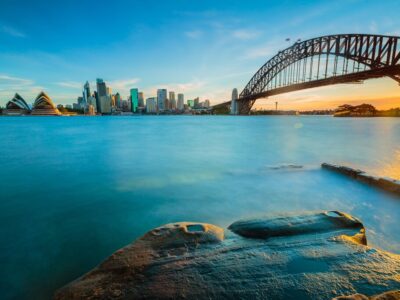
October is the middle of spring in most of Australia and the end of the dry season in the tropical north. Temperatures are creeping up after the cool of winter, and rainfall is generally low throughout the country. Conditions are great for most kinds of activities, from city sightseeing to outback road trips, though you'll want to avoid the sea in the tropical north this month as it's the start of the dreaded "stinger season."
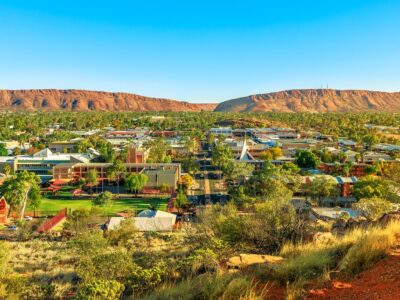
Australia is an enormous country that contains many different environments, climates, and landscapes; whichever month you go, you're likely to find somewhere with good conditions. Generally, southern and central Australia is best visited in the Southern Hemisphere spring or fall, and northern Australia in the dry season. With warm-to-hot weather, stunning beaches, vibrant cities, vast desert landscapes, and lush tropical rainforests, there's something for everyone to enjoy in Australia at any time of year.
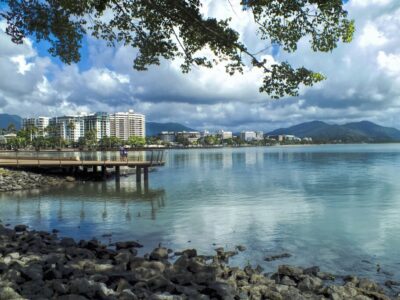
Travelers to Australia typically plan a trip for about 16 days when combining Sydney, Cairns, Melbourne, and Adelaide with Uluru and Darwin. If you're not interested in Uluru and Darwin, 11 to 14 days is enough for your Sydney, Cairns, Melbourne, and Adelaide trip. Meanwhile, a fast-paced highlights trip is possible in 10 days for travelers with limited time. Read on for the best itineraries, including Sydney, Cairns, Melbourne, Adelaide, and beyond.

Most people visiting Sydney, Uluru, and Melbourne spend about 10 to 14 days in Australia, which usually includes some time in Cairns as well. If you're not interested in Cairns, 10 to 12 days is enough for your Sydney, Uluru, and Melbourne trip. A fast-paced highlights trip is possible in six to nine days for travelers with limited time. Read on for the best itineraries, including Sydney, Uluru, and Melbourne, and beyond.

April is mid-autumn in Australia, but as the country is so large and has such a varied climate, this can mean everything from crisp fall days (Canberra, Melbourne, and Tasmania) to heat and humidity that's only marginally less than in summer (Darwin, and North Queensland). April is a great time to travel in Australia because parts of the country that are too hot to visit in summer comfortably become more accessible, and conditions in the southeastern cities are generally fine.

Most travelers will find that 10 to 14 days is perfect for a well-paced Australia trip with stops in Sydney, Cairns, Uluru, and Melbourne. Travelers with less time can hit the route's highlights in nine days, which makes for a fast-paced journey. Travelers with more time can enjoy extra sights and activities at each stop or explore more of the country—some of kimkim's favorite itinerary extensions include Adelaide or Darwin. Keep reading for more inspiring Sydney, Cairns, Uluru, and Melbourne itineraries.
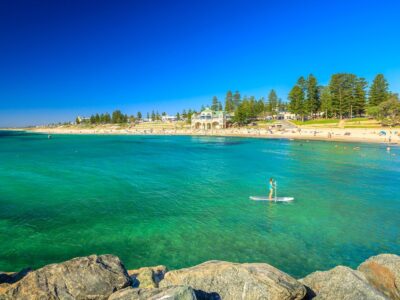
January is mid-summer in Australia, and that means throughout the country, temperatures range from pleasant to hot (and to scorching). Travelers seeking a sunny beach holiday won't be short of options around the coast. Cities can be scorching, but they're also air-conditioned; and for other outdoor adventures, Tasmania is a cooler option.

Australia is a bucket-list destination for many; it's far and it's massive, offering remarkable cultural and geographical diversity, from spectacular beaches, wet rainforests, and iconic landmarks to unique wildlife, world-class cities, and remote desert hamlets. Naturally, travelers have questions—"Is it safe?" "What's the food like?" or "How long should I spend?" This guide answers these and more of the most frequently asked questions, helping you to plan for a memorable Australian adventure.

Eight to 10 days are the most popular trip length for travelers to Australia interested in visiting both Sydney and Cairns, especially when also including Uluru. If you're only headed to Sydney and Cairns, you can enjoy a comfortably-paced trip in a week to nine days. Even those with limited time can see the highlights in as few as five or six days. Read on for the best itineraries, including Sydney and Cairns and beyond.
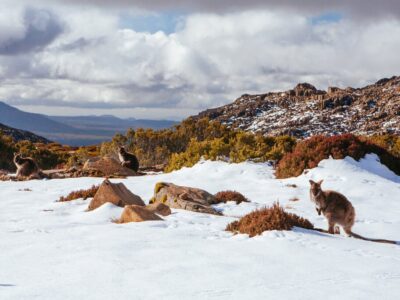
July is mid-winter in much of Australia and the middle of the dry season in the tropical north. But, as the country is so huge, temperatures and conditions vary enormously. From snow sports to swimming in warm tropical seas, Australia in July is whatever you want it to be.
